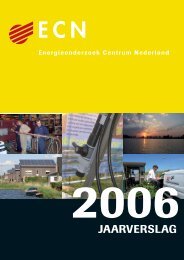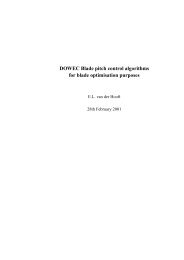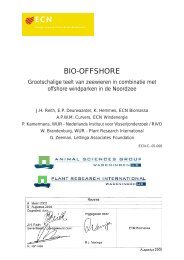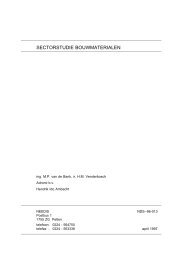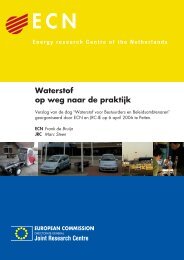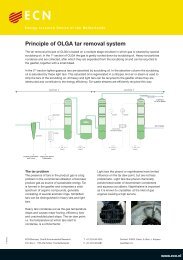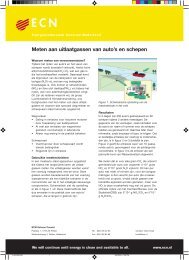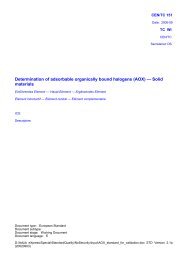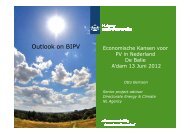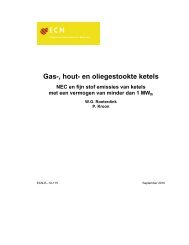PDF format (503 kB) - ECN
PDF format (503 kB) - ECN
PDF format (503 kB) - ECN
You also want an ePaper? Increase the reach of your titles
YUMPU automatically turns print PDFs into web optimized ePapers that Google loves.
tion routes that are important for the emissions. Figure 1 gives a schematical representation of each production<br />
route.<br />
The air blast furnace route represents the current state of the art primary steel production The oxygen blast furnace<br />
is in an experimental stage. Currently, several COREX plants are commercially operational; CCF still is<br />
in an experimental stage. MIDREX is the largest direct reduction process by production volume, while Circofer<br />
is on the edge of commercial introduction.<br />
The scrap based production routes use the electric arc furnace to melt and process steel scrap. The AC furnace<br />
[9] represents the major part of existing production capacity. The DC furnace and comparable EAFs are commercially<br />
operational, but the AC furnace still is by far the most common electric steelmaking process. Due to<br />
contaminants in the scrap, scrap based steel seldom is a fully fledged alternative to primary steel.<br />
Scenario results<br />
Figures 2 and 3 present the costs and emissions for the base case, assuming 0.1 tonne CO2 per tonne of GJe<br />
generated, 12% scrap addition in primary oxysteel processes, zero scrap addition in DR routes. and no CO2 removal.<br />
Following figures will show the influence of the emission factor of the electricity sector and CO2 removal.<br />
Declines in the electricity emissions factor have double effects. The emissions of electric steelmaking decrease,<br />
while the net CO2 emissions of the oxygen steelmaking routes increase, as the emissions avoided by converting<br />
excess energy to electricity decrease. Especially CCF and, even more so, COREX, with their large excess energy<br />
productions are at a disadvantage, while the blast furnace routes are hardly affected. The DRI and scrap<br />
based routes profit from the low emission factor of electricity generation; the AC EAF route even has near zero<br />
emissions.



